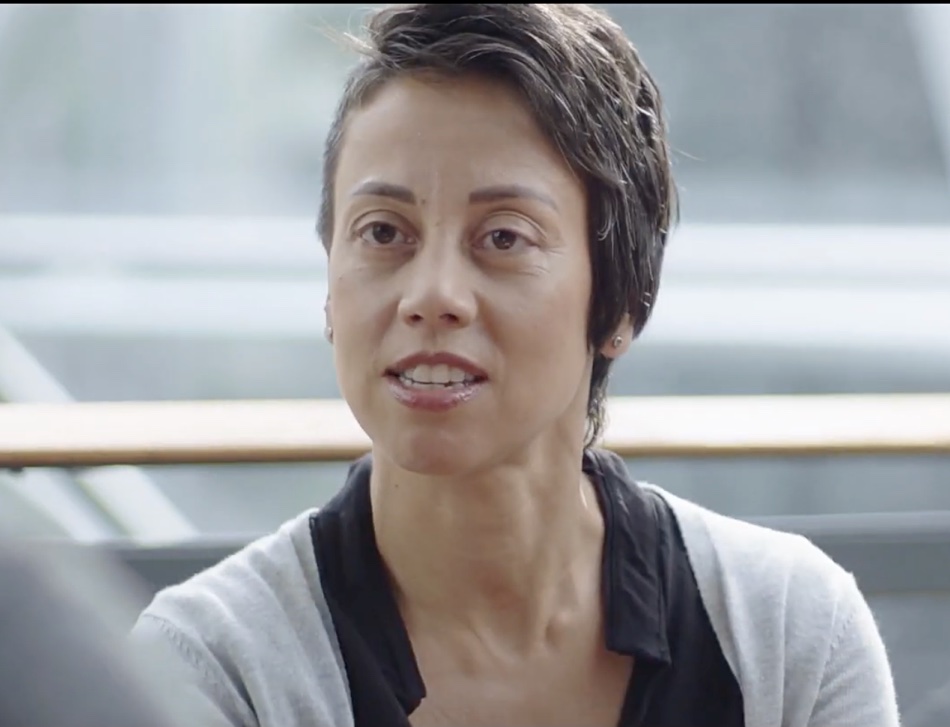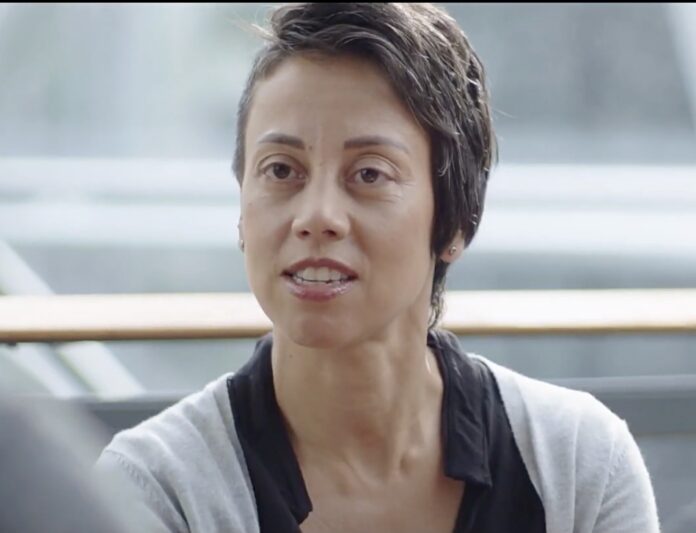Embracing diversity means being open to human talent wherever it occurs. AWS VP of Technology Mai-Lan Tomsen Bukovec chatted to us about women in senior levels in the IT field. She is an ex-general manager of AWS S3, Amazon CloudWatch, EC2 Auto Scaling, Amazon monitoring, and Amazon Simple Workflow before that.
Blocks & Files: With International Women’s Day today, what can be done to attract more women to the IT supplier field?

Mai-Lan Tomsen Bukovec: We must attract and retain more people from under-represented groups so we are bringing diversity to our work force and our ideas. That starts first with creating an inclusive and supportive environment where team members can brainstorm and iterate on the great news ideas of today and tomorrow. It can be daunting if you don’t feel supported, heard, or have the ability to bounce ideas off of someone and gain their advice or perspective. It’s why it’s so important to me as a leader to create and build a work community that cultivates these learning opportunities that support our careers. Additionally, we must encourage and support other people on the team (allies) who can really help invite diverse perspectives and transform a challenging environment. Change starts locally – in our own teams, with actions that we as individuals take.
In addition to owning change in their own organizations, leaders need to mentor and sponsor the next generation of diverse leaders across their companies. Human potential is everywhere. The first step is identifying and growing that talent. Then leaders have to make sure that there are opportunities for growth, channels to be heard, and a safe place to practice skills. It’s one of the reasons that I’ve been here in AWS for almost 13 years and look forward to many more – I think it’s a great place to learn and grow as a working mom/technical leader.
I will also say that change starts with each of us. Changing the diverse talent experience on your team isn’t just owned by the diversity or human resources team. Those organizations are invaluable for helping teams understand what inclusion and diversity means and how to get there. But real, sustained change requires organizational leaders and influencers to personally own and drive the change they want to see, starting first by understanding what the actual, on-the-ground experience is for their diverse talent and then changing it for the better. It’s up to us as leaders to find that talent, even if it’s in unexpected places, and develop it as mentors, sponsors, and human beings.
Blocks & Files: You are an executive sponsor for Asians@Amazon affinity group. What are you hearing on support for the community in the workplace?
Mai-Lan Tomsen Bukovec: Our Asians at Amazon affinity group focuses on sharing and celebrating our different Asian cultures, creating communities and events for Asian Amazonians all over the world, and helping leadership develop skills. We have an amazing volunteer community among the Asians@Amazon community who operate as a “board of directors” both locally and globally to support the larger Asian community in the company.
We take the same approach of listening to our customers as we do when we build products and services – which means we ask our individual local and global communities how we can support them and build programming and activities to do so.
Two key focus areas we heard were 1) bringing the community together through events to help strengthen bonds and provide networking opportunities; and 2) providing mentorship and guidance for leadership growth. For example, I am partnering with another Asian VP, Tony Chor, to lead monthly leadership training sessions for members of our Asians@Amazon community. The board of directors for Asians@Amazon also organizes celebrations for important holidays like the Lunar New Year, Diwali, and runs community building activities like a talent show, mindfulness/meditation classes, and a Ping Pong tournament.
You have to celebrate difference at the core of everything you do as a builder of products and services in order to innovate. At Amazon, our Amazon Leadership Principles guides how we operate as builders of product and services. The Amazon Leadership Principle “Right a Lot” explicitly calls out that leaders “seek diverse perspectives and work to disconfirm their beliefs.”
That is a very important concept. Not only does the Leadership Principle specifically call out that we need to look for different perspectives, but it says that we need to actively try to find a viewpoint that contradicts a strongly held belief or approach. So, in order to be Right a Lot, you have to start by assuming that your starting conviction or belief might not in fact be correct and use the perspectives of those around you to confirm the right approach for what you are building.
I’ve seen firsthand how that works and can attest that it makes for a better product and service for our customers everywhere.
I also think that there’s a personal accountability for every leader to create a work environment that embraces diversity. If you make that personal accountability a shared tenet, then everyone knows that it’s part of the expectations of the organization. For example, the Amazon Leadership Principle “Strive to be Earth’s Best Employer” says “leaders work every day to create a safer, more productive, higher performing, more diverse, and more just work environment.” At Amazon, you are a leader as well as a manager, and that means it’s on everyone to work every day for that environment.
Blocks & Files: You have written this about balcony-hopping: “We take our operational promise to our customers very seriously. I carry a pager and if I get paged, I am [on] that balcony for my service – on the operational call, throughout the event and in the details for the follow-up. I didn’t straddle balconies. When I am at work, I am 100 percent present. When I am with my kids or my husband, I am 100 percent present.” Can you elaborate?
Mai-Lan Tomsen Bukovec: Before the week starts, I take a look at each day in the work week ahead. For a given meeting at work, I make sure that I understand my role so I can be 100 percent focused in the moments ahead – both feet on that balcony, whether it is as a mentor, manager, engineering manager, or product decision maker. My weekends are less structured but the same rule applies. If I am spending time with my husband or my kids, I’m fully present in those moments and my phone and other distractions tucked away.
I roughly calculate the percentage of time that I spend on each balcony during an average week. I make time for the balconies that are important to me and for the people who are on the balconies with me. I also track which important balconies that I didn’t spend time on in a given week so I can prioritize them for upcoming weeks.
When someone gets started with balcony hopping, it can be helpful to think about the impact on the person that shares your balcony, whether it is at home or at work. I know that my time is not inherently more valuable than anyone else’s time, no matter what role I have. If I am distracted or not focused in this moment, I am wasting the hard work of the team or the rare attention of my teenagers and basically sending them the message that my time is more important than theirs – which is not true and not OK. Being aware of my impact on that balcony helps me be present in my moment.
There are only so many hours in a day. The most important thing is that in the course of a given month, you are spending time on the balconies that are the most important to you. It is equally important to make sure that when you are on that balcony, you are 100 percent on it. You have both feet down, your weight is centered, and you are deeply in that moment.
Blocks & Files: What advice would you give your younger self if you were starting out in Microsoft back in 2001 from today’s standpoint?
Mai-Lan Tomsen Bukovec: I would tell my younger self and other women who are early in career to be bolder. Early on in my own career, one of my biggest challenges was overcoming my own perception that asking for new opportunities would be considered too much – too much of a stretch, too unexpected, too “insert something.” When I was younger, I sometimes held off on that bold ask and then saw others stepping into that gap instead of me. Once I realized that I had been overthinking the situation, I started to express what I wanted and as a result, I developed my skills much faster. It was a turning point for me. I had the work ethic and drive but once I realized how to grab an opportunity, it sped up how fast I was able to grow.








